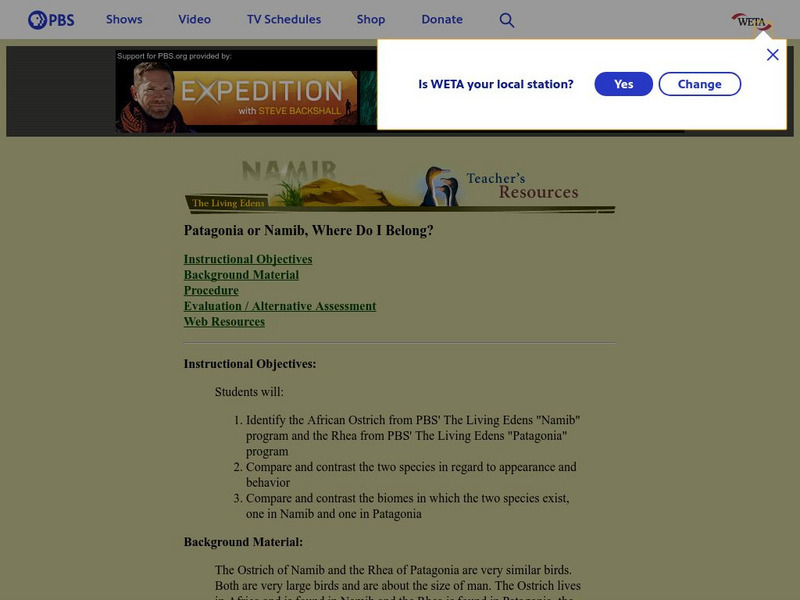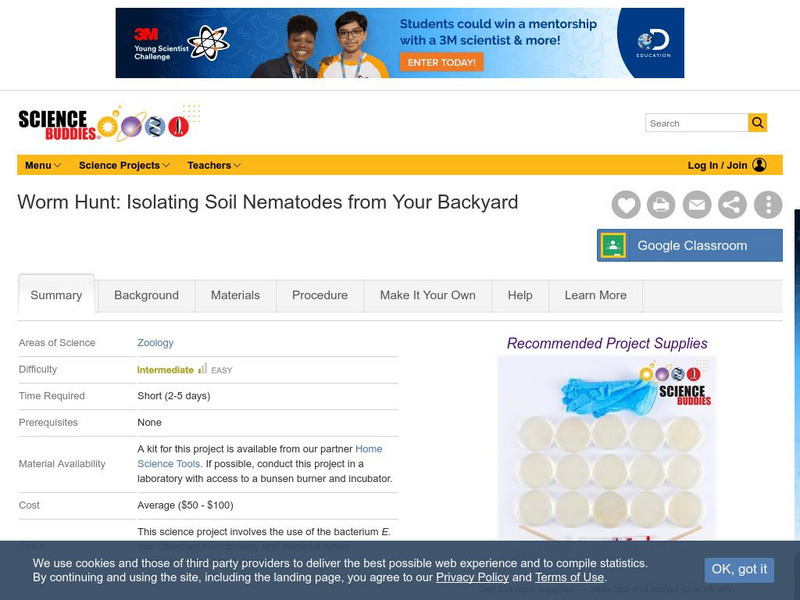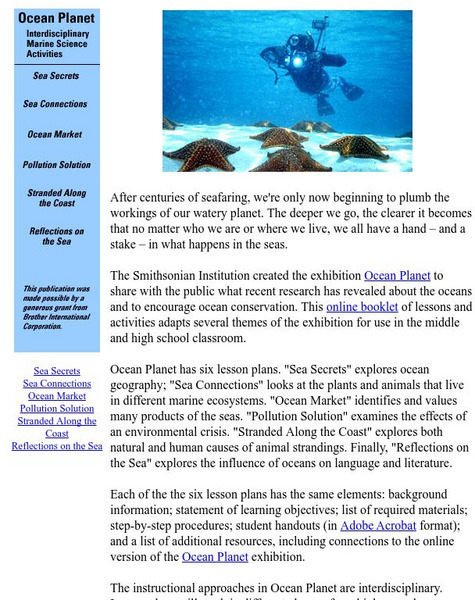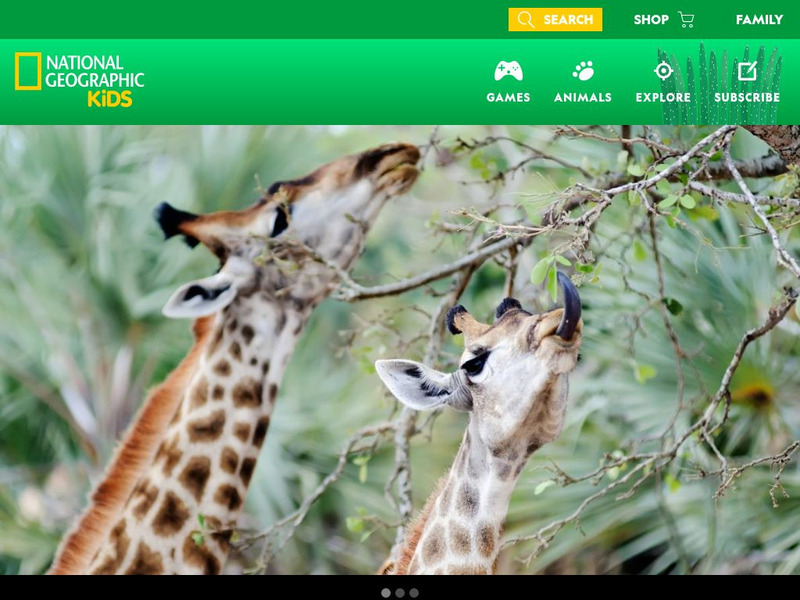Hi, what do you want to do?
PBS
Pbs Teachers:namib: Patagonia or Namib, Where Do I Belong?
Compare and contrast the African ostrich and the rhea in regard to appearance and behavior. Compare and contrast the biomes in which the two species exist, one in Namib and one in Patagonia.
ClassFlow
Class Flow: Animals and Their Homes
[Free Registration/Login Required] This flipchart was designed to help students in grades K-2 identify animals and where they live.
Nature Conservancy
Nature Conservancy: Planet Earth: Oceans and Coasts
Compilation of the Nature Conservancy's content about the ecology of oceans and coasts. Emphasis is on the biodiversity of these habitats and the human impact on the animal and plant life that live in our oceans and on our coasts.
Science Buddies
Science Buddies: Worm Hunt: Isolating Soil Nematodes From Your Backyard
Nematodes, also called roundworms, are the most abundant animal on Earth and can be found in your back yard, playgrounds, and many other places. This lab involves isolating nematodes from several soil samples to discover the best...
Curated OER
Mouse in Woodland
This interactive site has "Mousekin's Lost Woodland" environment game. Play this storytelling game with your friends and learn about different habitats.
Smithsonian Institution
Smithsonian: Ocean Planet: Interdisciplinary Marine Science Activities
Smithsonian Institution presents ?Ocean Planet: Interdisciplinary Marine Science Activities?. Through this series of six interdisciplinary lessons, young scholars will look at such things as the organisms in different marine ecosystems,...
PBS
Pbs Learning Media: Earth a New Wild: Ecosystem Explorer
Three choices of virtual worlds to enter: a vulture, a wolf or a shark world. Once inside these worlds view videos, play games, and discover the ecosystems of these wild animals.
Other
Welcome to Biodiversity Hotspots
Conservation International offers this extensive look at some of earth's most vulnerable areas. Some of the most remarkably diverse places in the world also prove to be some of the most threatened. Learn more about the efforts in place...
Other
The Leatherback Trust
The Leatherback Trust is a non-profit organization of scientists and future scientists to preserve the Leatherback sea turtles and their nesting beaches.
National Geographic Kids
National Geographic Kids: Animals: Giraffes
This multi-media National Geographic site includes video and audio clips and fun facts all about giraffes. Students can even send a postcard to a friend.
Other
Cresli Sea Turtles Program
CRESLI works in New York state to study and help the species of sea turtles near Long Island.
Utah Education Network
Uen: Trb 4:5 Investigation 1 Wetlands, Forests & Deserts
Learn about surface terrain and how plants and animals are affected by the temperatures and precipitation.
Enchanted Learning
Enchanted Learning: Polar Bears
Learn more about the polar bear when you visit this informative site that features a diagram of the polar bear and information on its diet, habitat, anatomy, reproduction and so on.
PBS
Nature: Cheetah
What are some of the cheetah's distinctive characteristics? Come and check out this resource featuring fun facts and information about the cheetah.
Smithsonian Institution
Smithsonian Libraries: Zoos, a Historical Perspective
An online sample of maps, drawings and photographs of zoos from over 30 states and 40 countries.
Missouri Botanical Garden
Missouri Botanical Garden: Tundra Animals
Explore this comprehensive resource on the birds and mammals of the tundra. This resource features information such as diet, class, order, size, habitat, conservation range and the like.
Other popular searches
- Powerpoint Animal Habitats
- Animal Habitats in Georgia
- Animal Habitats Math Games
- Animal Habitats Kindergarten
- Plant and Animal Habitats
- Lessons on Animal Habitats
- Animal Habitats Adaptation
- Math Animal Habitats
- Animal Habitats and Zoos
- Animal Habitats Bear
- Animal Habitats Webquest
- Australian Animal Habitats


















